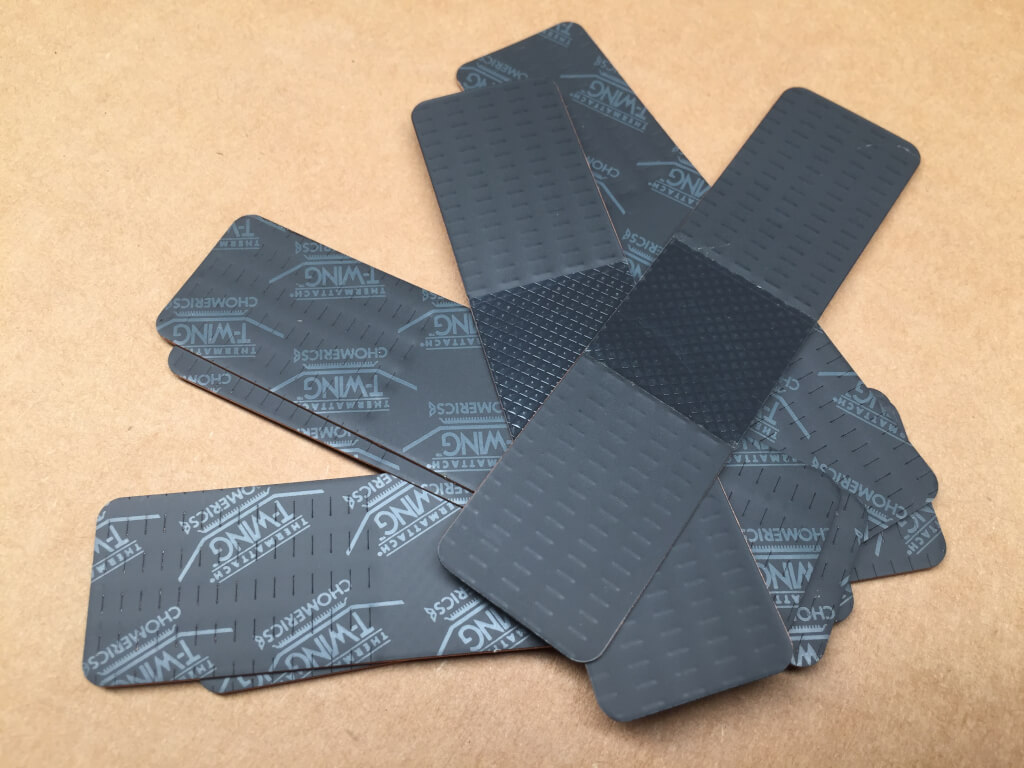Every new generation of electronics products handles more power within a more compact enclosure. Prudent control of the thermal interface is crucial. In order to maintain your product’s reliability and to extend its life-cycle the thermal management has become more challenging. In order to support you during this process we offer an extensive and versatile program of thermal interface materials.
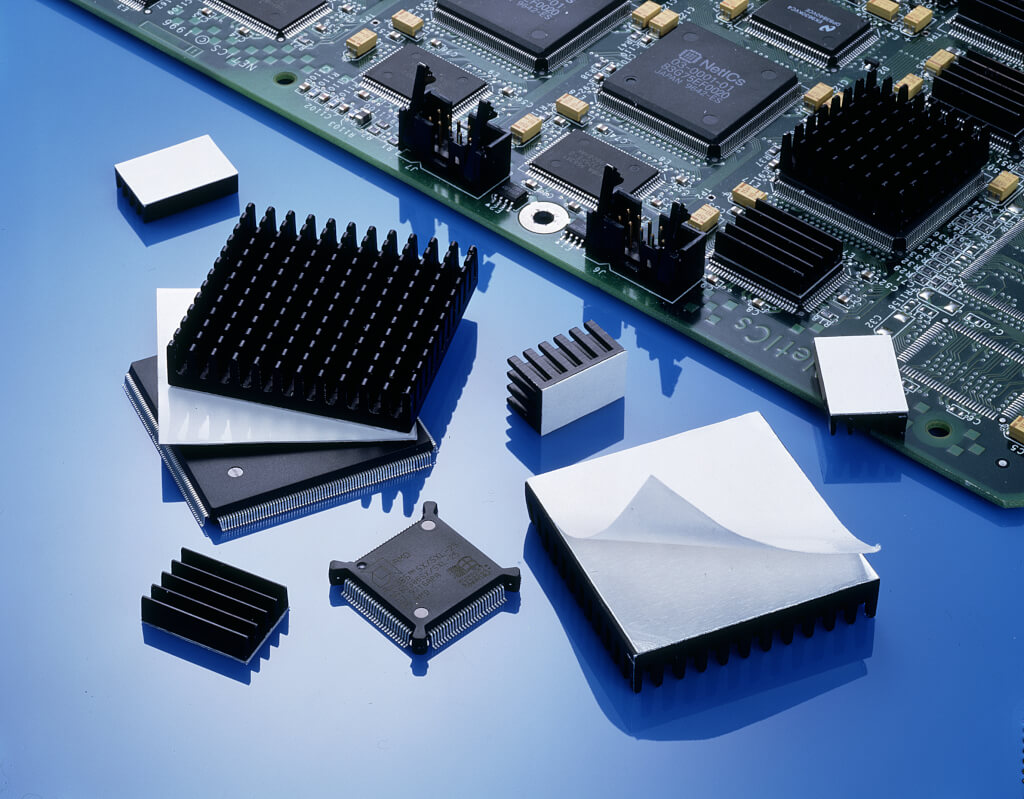
Phase change materials can be handled at room temperature as a thermal pad. Increased temperature liquefies the material, pushing entrapped air out and completely filling all voids forming perfectly to the mating materials. While doing so the increased temperature is released to the heatsink and the material returns to its more solid state.
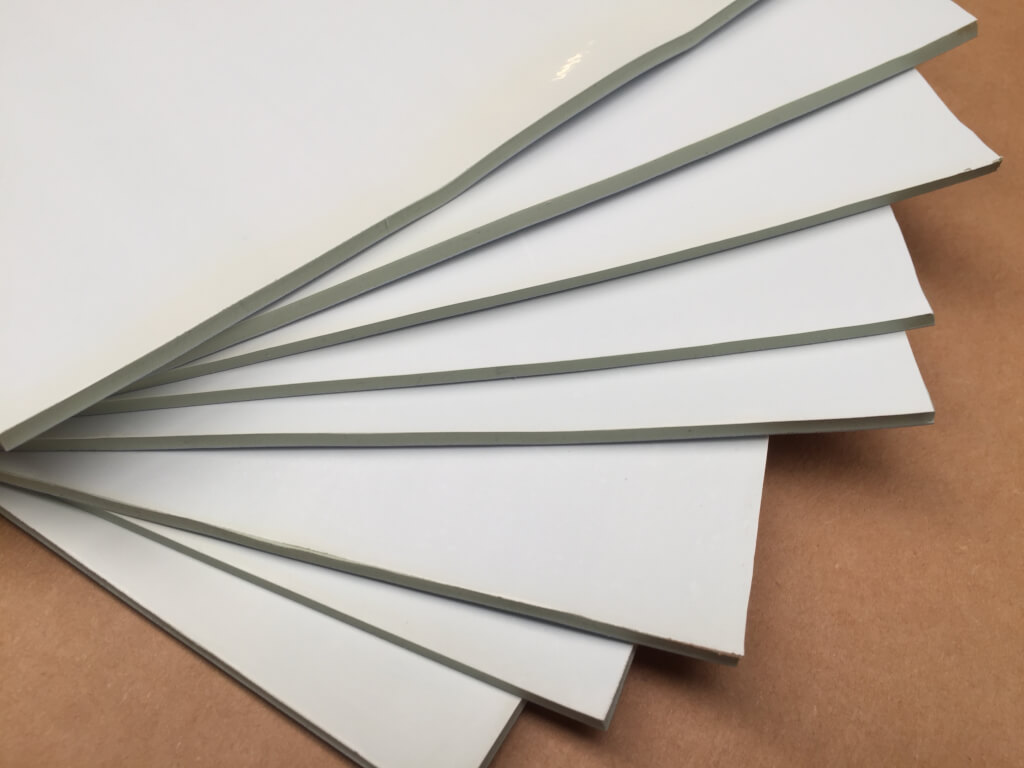
“Cure-in-place” thermal interface material can be applied as a gel. It cures to a semi-solid state after a heating cycle in an oven.
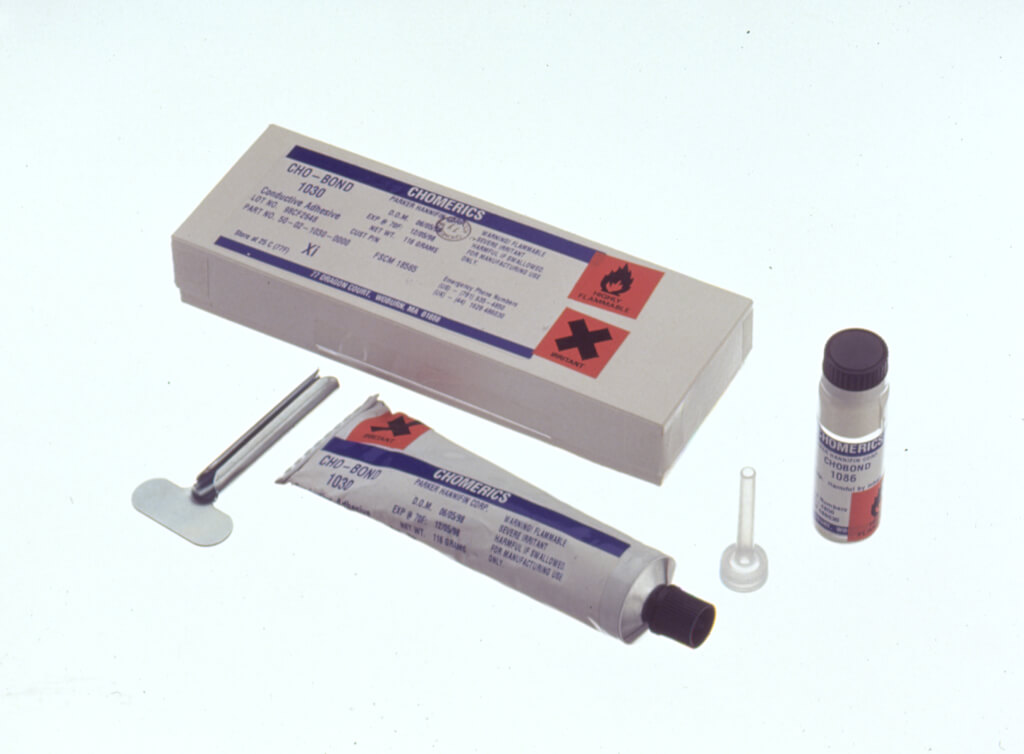
Thermally conductive electrically isolating gap-filler pads.
- Standard thickness ranging from 0.25 – 5 [mm]
- Aluminum or glass fiber carrier, thickness ranging from 0.25 – 5 [mm]
- Extra soft so it easily conforms to non-flat surfaces. Standard thickness ranging from 0.25 – 5 [mm]
- Silicone free, thickness ranging from 0.25 – 5 [mm]
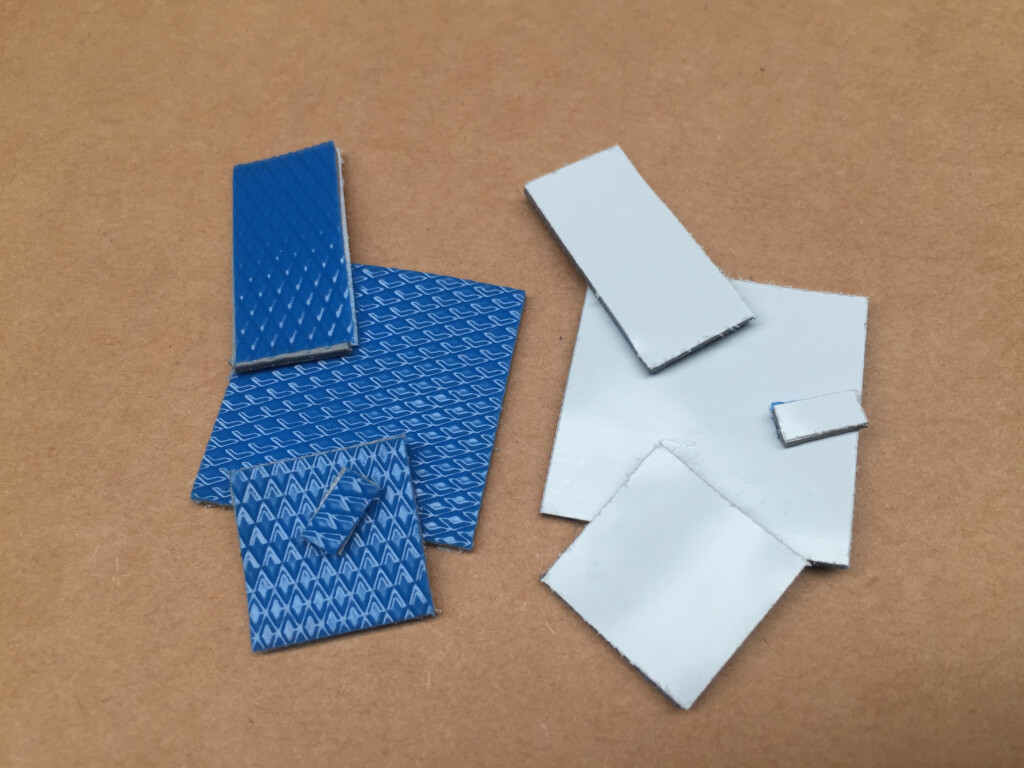
Thermally conductive electrically isolating pads. Standard thickness ranging from 80 – 400 [µm]. These pads have been specially designed as a more user friendly alternative to mica pads with paste commonly used between power dissipating components and heatsink.
- The silicone elastomer offers high temperature stability and good electrical isolation properties
- Fiber reinforced layer increases cuttability
- In order to minimize contact impedance a clamping force is required
- UL approved versions available
This product class is being distinguished by its high thermal conductivity, very high dielectric value and volume stability. These pads process very large thermal loads from discrete power components to heat sinks while in addition a long term electrical isolation between component enclosure under voltage and grounded heat sink is being realized.
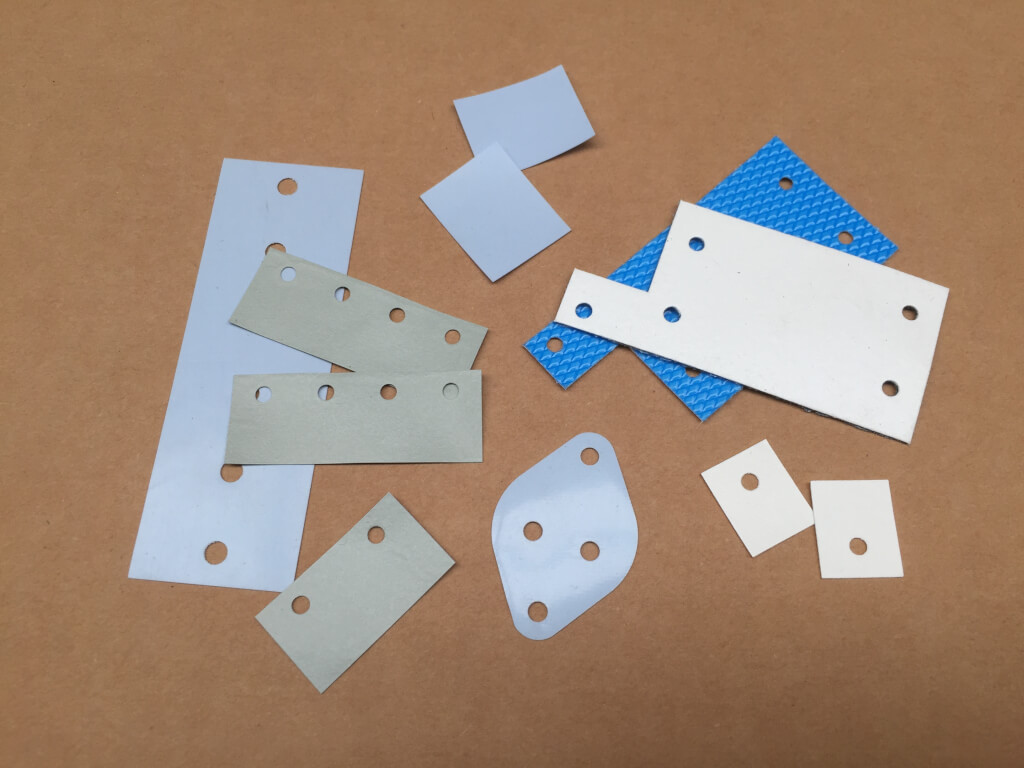
- Gel requires only a low deflection force. Dispensable in any shape using a robot or manually. Optionally with tiny glass beads so a too high clamping force does not create connectivity between the parts
- Paste can be dispensed, stenciled and screen printed. No clamping force is required
- Putty supplied as a pad and deflects under a low pressure force. Extremely high thermal conductivity and easier to apply compared to gel
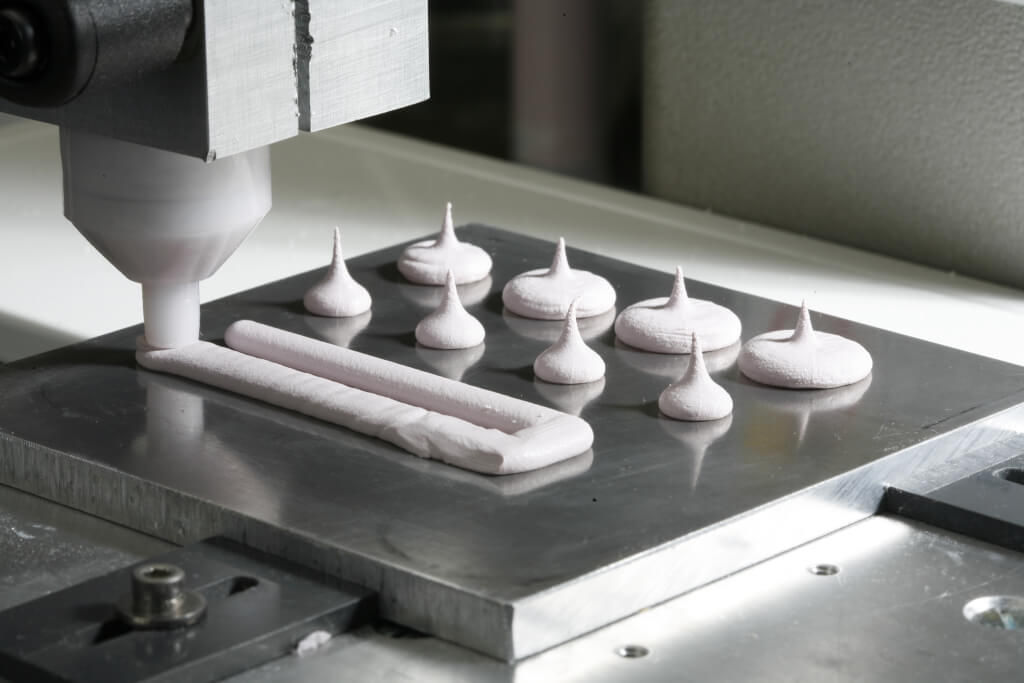
Thermally conductive double-sided tape is being constructed from an acryl based or silicone based adhesive being loaded with thermally conductive filler. These products have been designed for the reliable mounting of heatsinks onto power dissipating components without having to use additional mounting materials like spring clips.
- Acryl based adhesive for metals or ceramic enclosures
- Silicone based adhesive for attachment of plastic enclosures to heat sinks
- Pure ionic recipes for the use inside the component enclosures and on PCB’s
- Limiting space filling capabilities and require therefor reasonably flat surfaces
- High tear resistance at high temperatures
These thermal tapes are being used primarily because of their mechanical adhesion properties followed by their thermal properties. The thermal conductivity is average and the thermal properties within an application depends on the contact area available between both surfaces to adhere.

These thermal products provide a cost effective and efficient method of cooling IC’s in a limited space where a heat sink is not suitable.
- T-Wing
Specifically for microprocessors, memory modules, laptop PC’s and HD drives
- C-Wing
Applicable where EMI sensitivity occurs, low profile. Easy to attach
